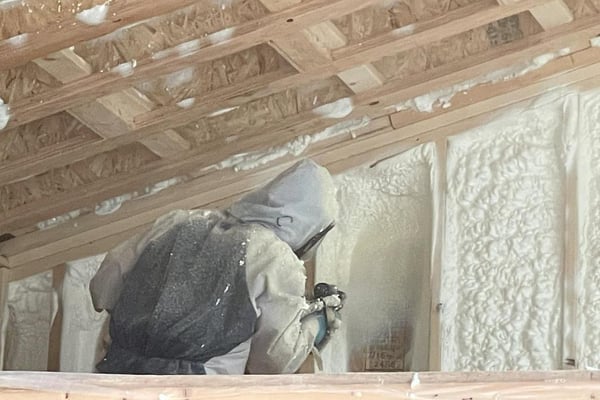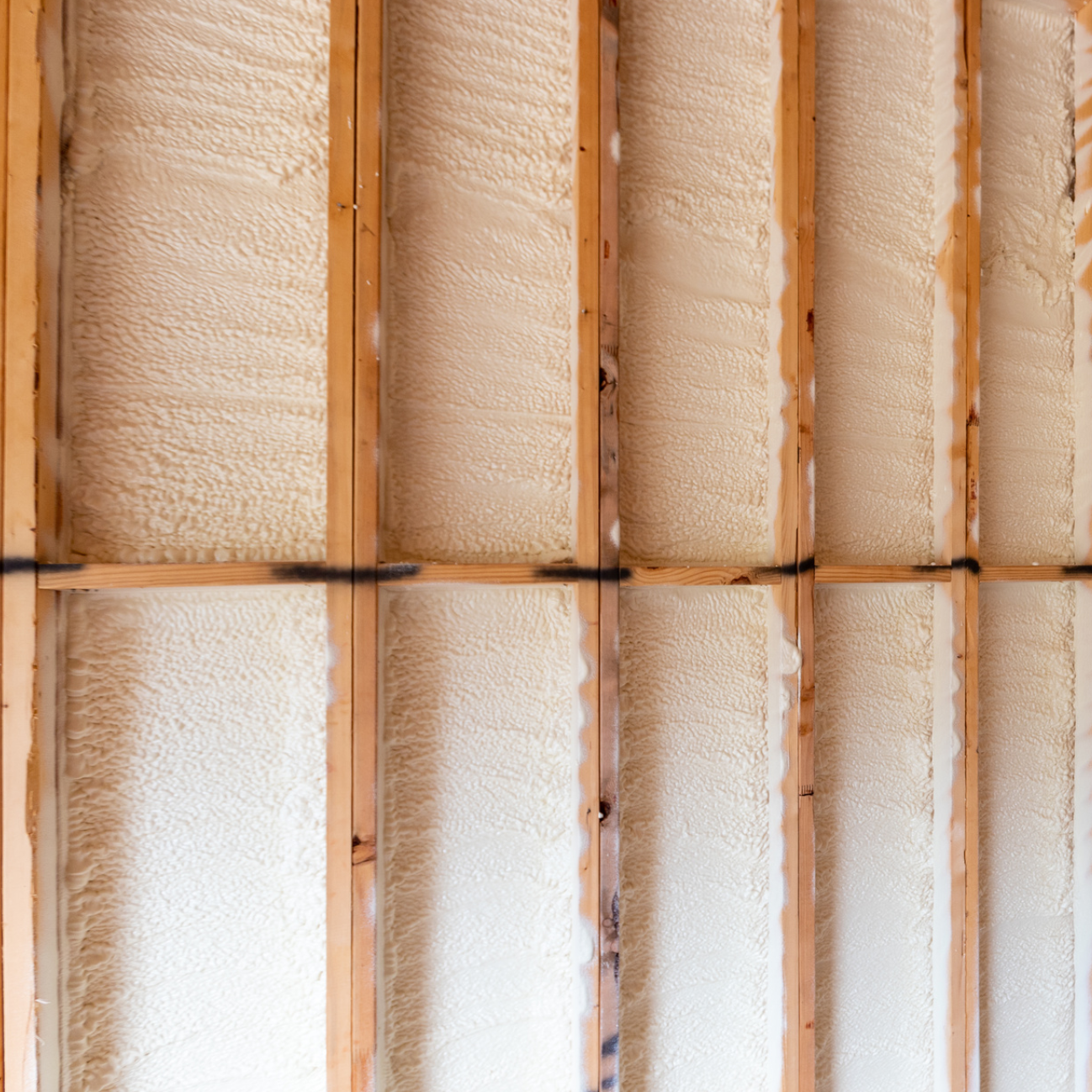Frequently Asked Questions Regarding Spray Foam Installation and Use
Spray Foam: The Ultimate Option for Air Sealing and Insulation
Spray foam insulation has emerged as a leading remedy for efficient air securing and thermal insulation, using a distinct combination of residential properties that set it apart from traditional methods. Recognizing the complete range of its advantages, setup procedures, and comparisons with other insulation kinds is important for making informed choices.
What Is Spray Foam?
Spray foam is a versatile insulation product that integrates the principles of air securing and thermal resistance to enhance power efficiency in buildings. Made up primarily of polyurethane or other similar substances, spray foam is applied as a fluid that expands upon call with surfaces, developing a solid, continuous layer of insulation. This distinct property enables it to fill up voids, cracks, and voids that typical insulation materials might overlook, giving a remarkable air seal.
There are 2 primary kinds of spray foam: open-cell and closed-cell. Open-cell spray foam is lighter and much more adaptable, offering outstanding noise absorption and a reduced R-value per inch - Spray Foam. In contrast, closed-cell spray foam is denser, giving a greater R-value, moisture resistance, and added structural stability to developing parts
The application procedure normally entails specialized equipment, guaranteeing a smooth application that sticks to numerous substratums, consisting of timber, concrete, and steel. This versatility makes spray foam suitable for both new constructions and retrofitting existing structures. Its capacity to develop an impermeable obstacle significantly adds to reducing energy consumption and improving indoor air top quality, therefore making it a recommended selection amongst homeowners and building contractors alike.
Advantages of Spray Foam Insulation
Among one of the most considerable advantages of spray foam insulation is its extraordinary ability to develop a constant air barrier, which successfully reduces power loss. Unlike typical insulation products, spray foam broadens to fill spaces and cracks, ensuring that air leak is drastically lowered. This particular not only improves energy effectiveness however also causes reduce energy bills with time.
Furthermore, spray foam insulation supplies exceptional thermal resistance, adding to a much more secure indoor setting. Its high R-value per inch enables for efficient insulation in restricted spaces, making it suitable for attics, wall surfaces, and crawl rooms. Furthermore, the moisture-resistant residential or commercial properties of spray foam help stop mold and mildew development, advertising healthier living conditions.
An additional crucial advantage of spray foam insulation is its sound-dampening qualities (Spray Foam). It efficiently lowers sound transmission in between areas, creating a quieter and much more comfy home atmosphere. The resilience of spray foam also sticks out, as it does not droop or settle in time, preserving its performance throughout its life expectancy
Just How Spray Foam Functions
Recognizing just how spray foam insulation functions is important for appreciating its efficiency in air securing and thermal resistance. Spray foam insulation includes two primary components: isocyanate and polyol resin. When these parts are combined, they undergo a chemical reaction that causes the product to increase swiftly, producing a thick foam that loads tooth cavities, cracks, and gaps.
As the foam increases, it sticks to surfaces, forming an impermeable seal that significantly lowers air seepage. This characteristic makes spray foam insulation highly reliable at protecting against drafts and wetness infiltration, which can bring about energy loss and damage gradually. Furthermore, the closed-cell variant of spray foam provides superior thermal resistance as a result of its inflexible framework, efficiently minimizing warm transfer.
The unique properties of spray foam enable it to adjust to irregular surface areas, guaranteeing thorough protection and a smooth barrier. click here to find out more Consequently, spray foam insulation not only enhances power performance yet also adds to boosted indoor air top quality by decreasing the buildup of allergens and contaminants. Eventually, recognizing the mechanics behind spray foam highlights its duty as a superior choice for insulation and air securing in both residential and industrial applications.
Installation Process Review

Prior to setup, the space must be sufficiently cleaned and prepped, ensuring that surface areas are devoid of dirt, particles, and moisture. Because contaminants can compromise adhesion and general performance, this action is critical. As soon as the location is prepared, the application entails blending both parts of the spray foam, which expands upon call and loads voids properly.
Educated experts need to conduct the installment, making use of specific devices to make certain consistent protection and optimum density. Safety precautions, including putting on safety gear and ensuring proper ventilation, are critical throughout this process. After application, the foam generally cures promptly, developing a strong barrier that boosts power efficiency.
Contrasting Spray Foam to Standard Insulation
When assessing insulation alternatives, spray foam insulation stands out in contrast to conventional products such as fiberglass and cellulose. One of the key advantages of spray foam is its superior air securing abilities. Unlike fiberglass and cellulose, which can allow air seepage, spray foam expands upon application, filling up gaps and gaps to produce anchor an airtight seal. This leads to enhanced energy efficiency, as less warmed or cooled air leaves the home, causing reduced utility costs.
Furthermore, spray foam gives a higher R-value per inch than conventional insulation kinds, supplying even more effective thermal resistance in a thinner profile. This particular is specifically useful precede with limited cavity depth. Additionally, spray foam is immune to wetness and mold development, which can be a substantial worry about cellulose and fiberglass, especially in damp settings.
However, spray foam insulation usually brings a greater in advance expense than its traditional counterparts. Property owners should weigh this initial investment against lasting energy cost savings and performance benefits. Inevitably, while both insulation kinds offer their function, spray foam arises as a much more innovative remedy for modern-day insulation requirements, especially in terms of air securing and thermal effectiveness.

Final Thought
In recap, spray foam insulation represents an extremely reliable service for accomplishing optimal air securing and thermal resistance. Its one-of-a-kind residential properties, consisting of moisture resistance and noise dampening, make it appropriate for numerous applications in both brand-new building and constructions and retrofitting projects (Spray Foam). The preliminary expenses may be greater contrasted to standard insulation products, the long-lasting benefits, such as considerable energy cost savings and enhanced indoor air high quality, justify the financial investment and underscore its value in modern-day structure techniques.
Spray foam insulation has actually arised as a leading option for efficient air sealing and thermal insulation, providing a special combination of residential or commercial properties that set it apart from conventional methods.Spray foam is a versatile insulation material that integrates the principles of air securing and thermal resistance to improve power efficiency in buildings.When examining insulation options, spray foam insulation stands out in comparison to traditional products such as fiberglass and cellulose. Eventually, while both insulation types offer their purpose, spray foam emerges site web as a more advanced remedy for contemporary insulation needs, specifically in terms of air sealing and thermal performance.
In summary, spray foam insulation represents a very efficient remedy for accomplishing optimal air securing and thermal resistance.